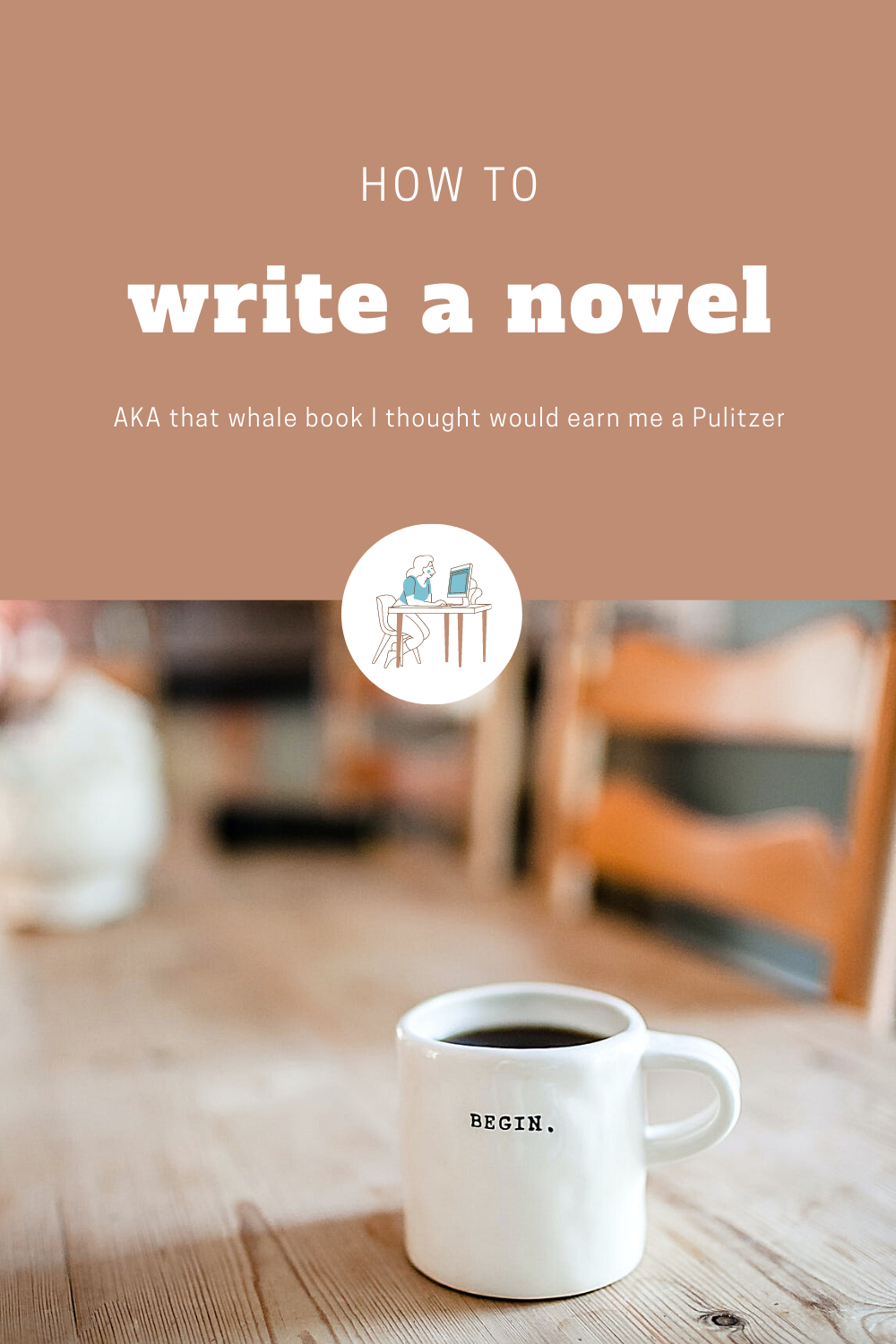AKA that whale book I thought would earn me a Pulitzer
A fellow writer doing the hard work of slogging away to fill in the blank page emailed me a question that gave me pause. She asked:
Hi Katie,
I have so many ideas for stories and really want to write a novel. But I’m finding I can only write a few pages before I’ve told the whole story. How in the world do I write an entire book? How many adjectives can one use before a book is just a bunch of descriptions with a lost plot?
Any and all suggestions are welcome!
This one had me scratching my head: How do we fill a novel? How do we sustain a story across hundreds of pages and thousands of words? My goodness, it looks like Mount Everest.
I realized we’re looking at this from the wrong angle: We shouldn’t be trying to write a novel but rather trying to give a story its proper framework. Not every story is meant to be a novel. Some are novellas; others, short stories; still others are flash fiction. And, truly, some story ideas are not meant to be stories — they might wind up as tiny pieces of a larger tale or, or, they might be nothing at all. (I have some scraps somewhere of a “story” I wrote about what one whale was trying to say to another whale. The initial idea had me so excited, you guys. I really thought, “This is it. This is how I get my Pulitzer.” Needless to say, scrapped.)
Photo by Danielle MacInnes on Unsplash
This is where I think it’s helpful to remember that there are piles, loads, heaps of story fragments on every writer’s computer. Every single writer. I have hundreds of nothings on my computer. There are so very many false starts in the writing effort. Remember that you are writing, and that’s the real achievement. We’re sometimes lead to believe that holding the hardback or paperback version of our effort is the glory, but it isn’t; it’s modeling a life around the writing practice. If that results in publication, then bully for you! But if it doesn’t, if you produce a string of flash fiction and no novel, then you’re no less a writer. The saying is “Writers write,” period, not “Writers write novels.”
My advice is:
Think of writing as a lifelong craft that requires practice and effort with the sole goal of having a lifelong effort. Printing your work and having other people read it is a dangerous goal because then your vocation becomes about other people instead of yourself.
Read Anne Lamott's Bird By Bird, if you haven’t already. I revisit it every couple years because it’s chockablock with advice, reminders and real talk. It’s a gorgeous book. In fact, while reading whatever it is that you’re reading, notice how the author sustains his or her story. Does he or she include more scenery descriptions? Is there less dialogue than in your work? Do the characters have fuller backgrounds than you’ve attempted before?
Keep starting and stopping but then starting again. I know it’s so very, very frustrating, but please don’t stop writing. Keep writing draft after draft until you will (I promise you will) stumble upon a bigger story that combines everything you’ve learned about writing through all these false starts. And for Pete’s sake, don’t delete these scrapped ideas of yours. Keep compiling them because you might be able to use them later on. (It feels oh-so good to copy and paste from a draft into a longer piece you’re working on and see that word count jump up. Delicious.)
This is the writer’s life — you really are living it! It’s frustrating and feels like not enough and too much at the same time.
I hope this helps, but please do know that I’m right there with you. We all are.
You might also be interested in:
Want to get your hands on the studies and research I create for writers and creatives like you?
Click here!

